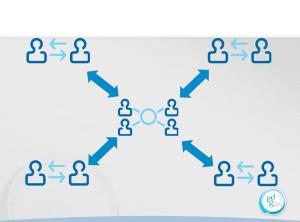“They say that time changes things, but you actually have to change them yourself.” – Andy Warhol
Organizational change can make people feel uneasy and vulnerable. You may worry about the security of your job role, your new co-workers, or your revised job responsibilities.
As your organization transitions to its new changed state, you are likely being asked to change as well. That’s difficult given these two key reasons why:
- No one can paint you a crystal clear picture of the future, and—more importantly—what that future means for you, personally.
- No one is placing a roadmap in your hands and saying, “Here’s exactly what you need to do to get there.”
In the absence of a final destination and a roadmap for getting there, you can still move forward. Here are some suggestions for doing so:
Focus on the elements that you can control.
It’s natural to feel stuck, frustrated, and overwhelmed. When these feelings arise, acknowledge them and make a conscious decision to control your reaction. Look upon organizational changes as opportunities to position yourself as a key contributor to the change. Identify new processes to create, new people to meet, and new strategies to implement. In essence, take account of what is while optimistically considering what could be in the future.
Plan for success.
Once you’ve identified opportunities to enact change, it’s time to plan for taking action. Ask yourself: How, specifically, would you introduce yourself to new colleagues—or reposition yourself to existing colleagues if the scope of your job has changed? What are the necessary steps in the process for helping your internal clients achieve their business goals? How might you educate your internal clients on this process? In short, put together a game plan for action that outlines the steps you can take in the near-term and long-term to ensure your success.
Put your plan into action.
It may appear to make sense to wait until the organization has evolved into its final changed state in order to put your plan into action. If you do this, though, you lose valuable time to build relationships, shape people’s perceptions of your talents, and demonstrate your skill set. Think about it this way…significant bonds are created when you’re in the trenches with people working together to address a challenge. Don’t lose time. Begin to implement your action plan amidst the change. If you do, you will impress others by showing them that you’re committed to building the roadmap with them and travelling together to the final destination.






 How do we expand our relationships with our clients from “order-takers” to trusted advisors? First, and foremost, we need to begin by changing our mindset that we always need to say “yes” to our clients. When our clients approach us about a specific training need, transition the conversation from solutions to open-ended probing questions, targeted to identify the true performance and business need. After all, what value are we providing to our clients if we provide learning solutions that do not impact their business results?
How do we expand our relationships with our clients from “order-takers” to trusted advisors? First, and foremost, we need to begin by changing our mindset that we always need to say “yes” to our clients. When our clients approach us about a specific training need, transition the conversation from solutions to open-ended probing questions, targeted to identify the true performance and business need. After all, what value are we providing to our clients if we provide learning solutions that do not impact their business results? 

